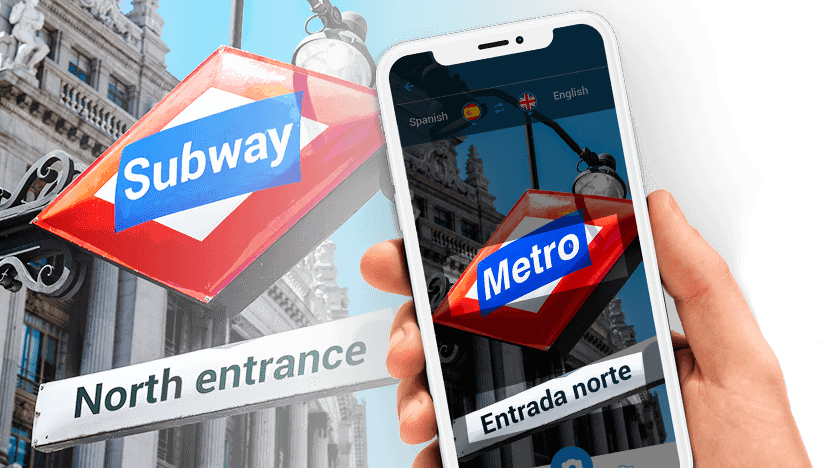
Have you ever considered enrolling in a full immersion language program? It’s quite common to dismiss the idea for two reasons. First, many people assume these programs are prohibitively expensive. Second, the thought of making such a significant life change can feel overwhelming. However, as we’ll explore, these assumptions are often misconceptions.
In fact, full immersion language programs aren’t as costly as they might seem. Moreover, not all require you to give up everything and travel halfway across the globe. Today, we’ll show you how some immersion programs can be both affordable and convenient.
We’ll also highlight the benefits of this learning method, explaining why full immersion is a worthwhile investment of your time and money. Most importantly, we’ll explore how this experience can be transformative.
Pack your bags, because today we’re diving into the world of full immersion language programs!
First things first: What is a full immersion language program?
There’s no single, textbook definition of full immersion. It’s unlikely you’ll find a one-size-fits-all program. In the world of language learning, full immersion refers to a comprehensive approach where you’re placed in an environment where the language you want to learn is the dominant one. This often involves direct exposure to the culture, local people, and everyday customs.
Typically, this type of learning requires you to relocate to a specific region and live like a local. But, as we’ve mentioned, not all immersion programs demand you pack your bags and move. In many countries, you can find immersion experiences that don’t require leaving home.
What all full immersion programs share, however, is their commitment to immersing you in the language for most of your day. Whether you stay within your borders or venture far away, full immersion exposes you to a demanding environment. An environment where your native language becomes secondary or nonexistent. The goal? To reprogram your brain. Let’s explore how and why this works.
How full immersion rewires your brain?
The human brain is truly fascinating. Decades of scientific research have yet to unravel its mysteries. Scientists have not even uncovered an “acceptable” percentage of how the brain fully functions. Its capacity is infinite and astonishing.
One universal trait shared by all brains across the globe is their plasticity. Your brain, along with those of the 8 billion people on Earth, can adapt, expand, and contract at will. It can shut down like a candle or light up like a bulb (hence the famous symbol of ideas). Furthermore, it has the capacity to absorb as much information as the most powerful supercomputer.
However, the brain has a rather embarrassing flaw—it’s lazy! It dislikes working and only exerts effort when absolutely necessary. If there’s no real need, your brain will take a little nap, shutting down functions that demand significant energy.
In addition to being lazy, the brain is a full-blown addict. It craves the hormones that produce pleasure, feeding into its lethargic tendencies. Dopamine and other “happiness hormones” act as the irresistible fix it constantly seeks, creating a dangerous cycle. This is why, when faced with any prospect of change, your brain’s first response is to scream, “Hide!“
Yet, this ancient laziness and relentless pursuit of comfort are completely overridden in situations of danger. When your brain senses that you genuinely need it, it suppresses its natural tendencies and activates regions that are usually dormant.
The shift in brain structures and the activation of “survival mode”
The brain’s laziness and its preference for minimal effort can be entirely overridden when our way of life is at risk. The old saying, “necessity is the mother of invention,” holds a lot of truth. In potentially dangerous situations, the brain awakens from its slumber and comes to your rescue. However, these dangerous situations are not always as physical or tangible as they might seem.
You don’t need to be standing on the edge of a cliff or facing a hungry lion for your brain to kick into high gear.
For the brain, any disruption to its stability is perceived as a threat. This includes situations that may seem trivial to others but trigger red flags for your brain. This is where the reptilian brain, the most primitive part of the brain, steps in. This section is hardwired into all of us—it doesn’t need development because it comes “automatically installed.” We are born with it, the result of millions of years of evolution.
In stressful situations, the primitive brain takes control over the emotional and rational brain. It becomes the dominant force, reorganizing all thought processes with one sole objective: survival. And survival isn’t always tied to a real, tangible danger.
By now, you might be wondering: What does all this talk about the brain have to do with total language immersion? As you’ll see, total immersion becomes a “life-or-death” situation for your brain’s inherent laziness.

Extreme survival and total language immersion: What’s the connection?
All of this is rooted in scientifically proven and globally recognized theories. If this topic interests you, we recommend exploring Paul MacLean’s Triune Brain Theory. It offers a fascinating perspective on how our most vital organ operates. MacLean concludes that the human brain is capable of organic change and chemical restructuring to adapt.
This is where total immersion begins to make sense. When placed in a situation where communication is a necessity, the brain undergoes profound changes. You’ll be amazed at how, in these situations, the brain develops learning-dedicated areas at an exponential rate.
These areas allow you to sharpen your listening skills, helping you pick up words more quickly and accurately. Through imitation, you can learn to pronounce and recognize a massive number of words. In a total immersion environment, the first ability to develop is speaking and communication. The reason is simple: if you don’t learn to communicate, you won’t be able to perform basic, everyday tasks. You won’t be able to order food in a restaurant, go shopping, or meet people.
Gradually, as the immersion deepens, you’ll begin to understand and pronounce words just as the locals do. However, while this approach can help you navigate effectively, it remains an empirical and somewhat insufficient learning method. In other words, it helps you communicate, but it’s unlikely you’ll reach a truly proficient level. For this reason, total immersion works best when combined with simultaneous academic training.
Enhancing learning during immersion
Spending time in a full immersion environment will undoubtedly boost your communication skills. Yet, you may still struggle with grammar, pronunciation, or being clearly understood. This is where structured lessons come into play.
Formal classes provide the framework for mastering grammar, writing, phonetics, and comprehension. A qualified teacher can correct your mistakes, enabling you to progress faster.
The best immersion programs combine real-world experiences with classroom instruction. This dual approach creates a synergy that accelerates your learning and solidifies your understanding of the language.
Types of classes in immersion programs
Here are some common educational options available in full immersion programs:
- Private lessons with a tutor: Private instruction is widely available. Check with local consulates, cultural organizations, or online platforms for certified tutors.
- Language academies: Many cities host academies tailored to foreigners learning the local language. These institutions often place you in classes with students of similar proficiency.
- University programs: Universities frequently offer language courses for international students, providing an academic setting for learning.
- Cultural centers: Public and private organizations often run language classes for immigrants or visitors. Many of these options are affordable, and some are even free.
At this point, you would ask: How much will an immersion program cost? You will be amazed… Less than you think!

How much do full immersion programs cost?
When it comes to pricing, there are two key points to consider. First, it’s difficult to provide a standardized cost, as prices vary greatly. Second, these programs aren’t typically cheap. However, the investment is often comparable to what you’d spend on local language classes, with the added benefit of an immersive cultural experience.
Factors influencing cost include:
- The destination country
- The duration of your stay
- Accommodation type (hotel, rental, host family)
- Living expenses (food, transport, utilities)
- Tuition fees and learning materials
Despite the potential expense, there are affordable options. Many NGOs, language institutes, and private organizations offer budget-friendly programs. Your local embassy or expat groups can provide recommendations. Tell them what your budget is and they will be able to give you options according to your finances.
Full immersion vs. local classes: Two incomparable experiences
Remember when we mentioned that total immersion isn’t exactly cheap? Well, it’s essential to keep that in mind. However, if you do the math, you’ll see that the investment isn’t too different from what you’d spend on a language course in your own country. Ultimately, this is a calculation only you can make, as you know your financial situation better than anyone. What we can tell you is that these two options are impossible to compare.
There’s no denying that immersing yourself in the local culture and customs offers an invaluable experience. Those who have learned a language through total immersion often describe the good and bad moments as unforgettable memories they will always treasure.
On the other hand, we can’t ignore that it’s becoming increasingly easy to navigate a new language today. This can be an encouraging factor when making your decision. Thanks to tools like modern translation apps, you’ll always find a way to communicate.
For instance, you can download the Talkao Translate app to have real-time conversations using your phone as a translator. Additionally, with the Talkao Camera Translator, you can read any text, even in unfamiliar alphabets. And the Talkao Dictionary, with thousands of definitions in over 125 languages, will always be at your fingertips.
So, don’t be afraid to step out of your comfort zone and immerse yourself in the language you’ve always wanted to master. Total immersion will undoubtedly be an unforgettable experience. And who knows?
You might enjoy it so much that you decide to stay in the country you visit!










Newsletter